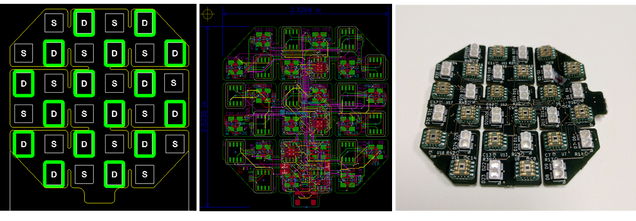
BOTLab Research Projects
Our group specializes in the development diffuse optical technologies for clinical applications including cardiovascular disease, rheumatological diseases, cancer, kidney disease, and others. Below is a summary of our current research projects.
Project 1: Speckle Contrast Optical Spectroscopy for Cuffless Blood Pressure
Speckle Contrast Optical Spectroscopy (SCOS) uses coherent laser illumination to quantify the volumetric flow of red blood cells within tissue. We are adapting SCOS to capture beat-to-beat changes in blood flow and volume across the cardiac cycle, enabling estimation of blood pressure without a cuff. Current work focuses on miniaturizing the instrumentation for unobtrusive, continuous monitoring and on rigorously validating its accuracy through studies in healthy volunteers and patients with hypertension.
Collaborators: David Boas (BU BME), John Forman (BMC), Naomi Hamburg (BMC)
Funder: NIH

Project 2: Spatial Frequency Domain Imaging for Monitoring of Scleroderma
Spatial Frequency Domain Imaging uses projections of patterned light to quantitatively measure tissue optical absorption and scattering. We are developing SFDI to measure the extent of skin involvement in an autoimmune disease called Scleroderma. We have shown that optical scattering measured with SFDI can differentiate scleroderma from healthy controls, and we are now assessing the ability of SFDI to longitudinally track scleroderma patients over time.
Collaborators: Andreea Bujor (BMC)
Funder: NIH

If you are interested in making your own SFDI system, check out our openSFDI project.
Project 3: Wearable Oximetry for Breast Cancer Treatment Monitoring
We are developing a near-infrared (NIR) wearable probe to monitor breast tumor hemodynamics during the course of neoadjuvant (presurgical) chemotherapy. The probe has a hybrid flex-rigid design that conforms to the natural breast shape and a high-density optode array that provides spatial mapping of oxygenation change in a 3D fashion. Our current technology goals are to develop a version of this probe that can be used by patients in their own home.
Funder: American Cancer Society

Project 4: Shortwave infrared (SWIR) imaging and spectroscopy for tissue water and lipid measurements
There has been a recent interest in exploring the shortwave infrared (SWIR) spectral region (approximately 900 nm – 2000 nm) due to development of newly available SWIR detectors and the reduced optical scattering at these longer wavelengths, allowing for deeper optical penetration in biological tissue. We are developing quantitative SWIR imaging and spectroscopy methods to quantify the level of water and lipids in tissue. These new methods have applications in kindey disease, sports medicine, consumer wearables, and many others.
